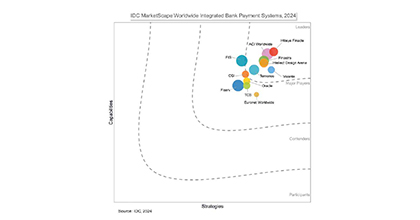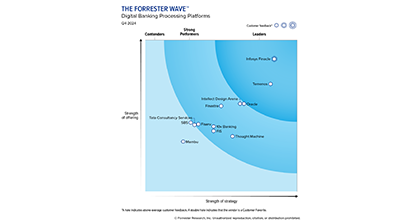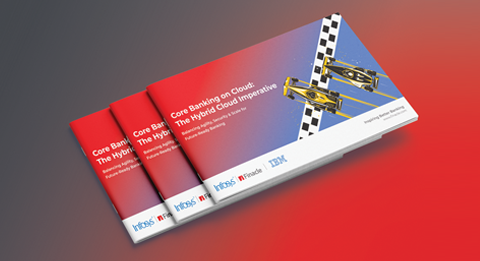In today’s digital-first world, businesses are transforming every aspect of their operations— by automating operations, servicing customers online, digitizing trade and payments, managing cash flow and leveraging online marketplaces. This digital evolution has been redefining corporate customer expectations from banks for some time now, making speed, convenience, and personalization the norm.
However, traditional banks have lagged behind, hindered by multiple challenges. Critical functions such as cash and liquidity management, trade finance, and corporate lending remain burdened by inefficiencies. Payments and collections remain a persistent challenge, with delays and complexities costing European businesses billions annually. Cross-border transactions, essential for the globalized nature of today’s economy, are further complicated by slow processing times and high costs. Moreover, the struggle to secure flexible financing is a pressing issue, particularly for fast-growing businesses in sectors like eCommerce and gaming. These pain points underscore a critical need for European banks to modernize and innovate.
Barriers to Embracing Digital
As businesses continue to evolve, the pressure is mounting on financial institutions to break free from outdated legacy systems and deliver solutions that are faster, more transparent, and better aligned with the demands of today’s digital economy. However, despite these challenges, many banks are not yet ready to fully embrace digital innovation. The reasons for this include:
- Legacy Systems: Siloed and complex legacy systems limit agility, preventing banks from responding quickly to new opportunities or integrating new technologies.
- Slow Pace of Innovation: The inflexibility of governance structures and the complexity of existing systems drive up costs and slow down the pace of innovation.
- Budget Constraints: Tight budgets often lead banks to prioritize short-term gains over long-term investments in corporate banking innovation.
- Risk and Compliance Concerns: Stringent data security, privacy, anti-money laundering (AML), and know-your-customer (KYC) regulations discourage banks from innovating.
- Lack of Executive Support: In some cases, senior executives prioritize other areas over corporate banking innovation, which can stifle progress.
But the urgency to innovate is undeniable. European businesses are demanding more agile and comprehensive solutions. The opportunity lies in rethinking the fundamental ways banks create, deliver, and realize value.
Reimagining Value Creation, Delivery, and Realization
To better serve corporate clients, commercial banks must focus on transforming people, processes, and technology. Here’s how banks can approach this transformation:
- Focus on Customer Needs: Banks must focus on their customers’ jobs to be done—designing intelligent offerings that deliver the outcomes businesses need. By designing intelligent services around end-to-end customer journeys, banks can deliver more relevant and impactful solutions.
Capchase in the US is a perfect example in this case. It addresses the unique needs of SaaS startups by offering revenue-based financing. Instead of taking on traditional loans or selling equity, Capchase allows SaaS startups to borrow against their future recurring revenue. This offers greater flexibility and allows startups to invest in growth.
- Leverage Technology to Create Better Value: Banks must harness technology to create solutions that are real-time, standardized, automated, contextual and scalable. Technologies, including digital touchpoints, cloud, predictive and generative AI, blockchain, and robotic process automation, unlock new possibilities that align with digitization journey of businesses. For example, real-time data analytics and AI offers businesses quicker access to insights, improving decision-making and cash flow management.
Goldman Sachs reimagined the future of transaction banking with its groundbreaking platform, Transaction Banking (TxB™). They envisioned a global transaction banking platform that is agile, secure, and effortless for clients to navigate, while seamlessly integrating with partners. Leveraging its robust technology foundation, impeccable risk management, strong balance sheet, and trusted client relationships, Goldman Sachs introduced unique advantages unmatched by new entrants. As the first fully cloud-native transaction banking platform, TxB™ has transformed the landscape for corporate treasurers and payments executives.
- Partner to Deliver more Value, Faster: In the digital age, partnerships are a key strategy for growth. Partnerships enable banks and ecosystem players to benefit from shared customer data to develop and deliver better customer outcomes. Collaborating with fintechs or creating ecosystems allows banks to build new capabilities better and faster, deliver more comprehensive solutions to their clients, and reach new customers.
JP Morgan's Payments Partner Network is a prime example. It offers customers a marketplace of third-party applications connected to JP Morgan’s payments platform, providing an ecosystem of integrated solutions for billing, ERP, trade finance, payments, and other treasury needs.
- Realize Value with New Business Models: Banks can adopt new business models, that enables them best to cater to specific needs of the segments they serve within the commercial banking ecosystem. Progressive corporate banks and new digital players are leveraging technology and partnerships to reshape the economics of existing business models and develop new ones, including digital marketplaces, superapps and embedding their services into partner ecosystems.
For example, India’s ICICI Bank has progressively expanded its offerings for SME customers through its InstaBiz superapp, designed to meet a wider range of their needs. Beyond standard features like fund transfers, instant current account opening, and immediate overdraft access, InstaBiz provides services such as ERP integration, working capital loans, tax deadlines and payments, and import-export solutions like bills of entry and bank guarantees.
The Road Ahead
As businesses move ahead in their digital transformation journey, banks must embrace new business models to deliver the agility, innovation, and seamless experiences that today’s corporate clients expect. The key to staying relevant and future-ready lies in continuing to evolve on the cycle of creating, delivering and hence realizing better value leveraging modern technologies and ecosystem partnerships. Banks, fintechs, and other financial institutions that collaborate effectively will be better positioned to create, deliver, and realize value faster than their competitors. As the industry evolves, those who adapt and innovate will not only survive but also lead the way in shaping the future of commercial banking.






















